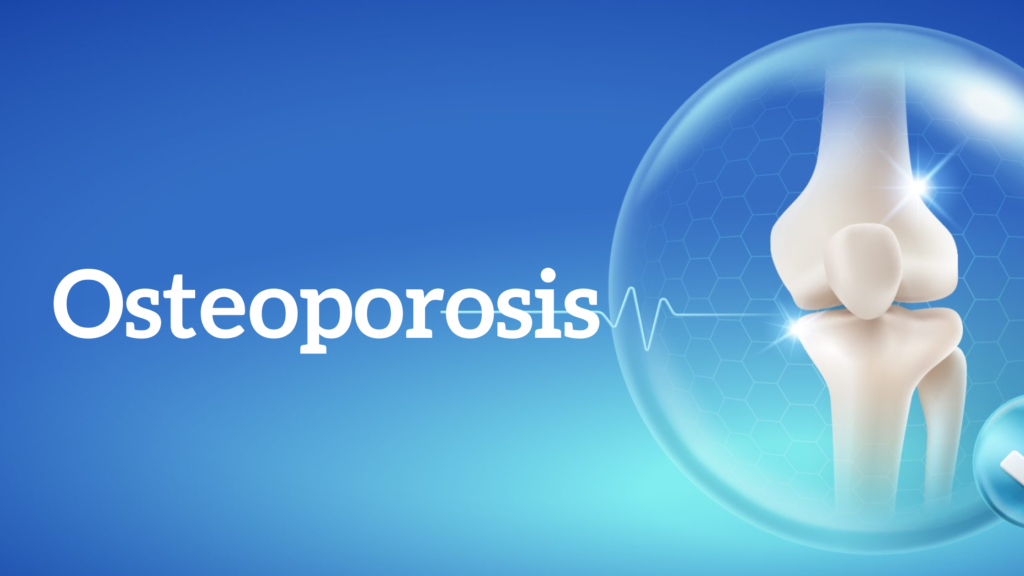Osteoporosis – Overview
Osteoporosis is a chronic condition where bones become weak, brittle, and more likely to fracture, even with minor falls or injuries. It occurs when bone loss outpaces bone formation, reducing bone mineral density (BMD).
📉 What Happens in Osteoporosis?
- Bones lose calcium and minerals, becoming porous (“osteoporotic”).
- Affects the structure and strength of bones.
- Commonly leads to fragility fractures, especially in the hip, spine, and wrist.
🧬 Causes & Risk Factors:
- Aging – Bone mass naturally declines with age
- Postmenopausal women – Drop in estrogen accelerates bone loss
- Family history of osteoporosis or fractures
- Calcium and vitamin D deficiency
- Sedentary lifestyle
- Smoking and alcohol
- Certain medications – e.g., steroids (prednisone), anticonvulsants
- Medical conditions – thyroid disease, celiac disease, chronic kidney disease
🩺 Symptoms:
Osteoporosis is often called a “silent disease” because there are no symptoms until a fracture occurs.
When symptoms do occur:
- Back pain (due to vertebral fractures)
- Loss of height over time
- Stooped posture (kyphosis)
- Bone fractures (hip, spine, wrist) from minor trauma
🔍 Diagnosis:
- Bone density scan (DEXA or DXA scan):
- Measures BMD
- T-score:
- Normal: ≥ -1
- Osteopenia (low bone mass): -1 to -2.5
- Osteoporosis: ≤ -2.5
- Blood tests to rule out secondary causes (calcium, vitamin D, thyroid function)
💊 Treatment:
🧂 Lifestyle:
- Calcium (1,000–1,200 mg/day)
- Vitamin D (600–800 IU/day or more if deficient)
- Weight-bearing exercise
- Fall prevention
- Quit smoking, limit alcohol
💊 Medications:
- Bisphosphonates (e.g., alendronate, risedronate)
- Denosumab – Antibody that slows bone resorption
- Selective Estrogen Receptor Modulators (SERMs) – e.g., raloxifene
- Hormone therapy – Estrogen (for postmenopausal women)
- Parathyroid hormone analogs (e.g., teriparatide) – Stimulate bone formation
